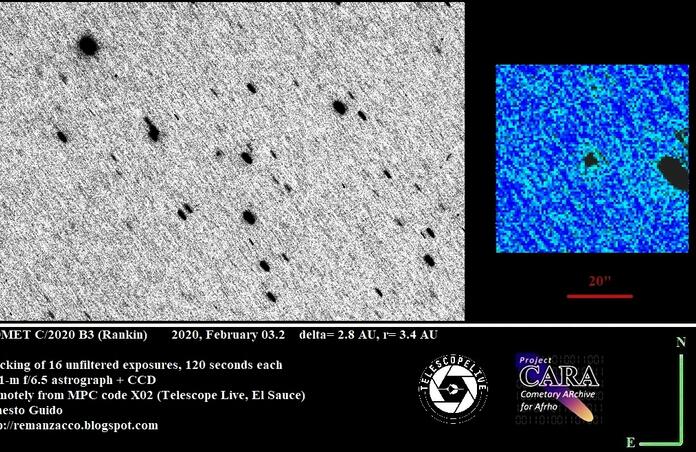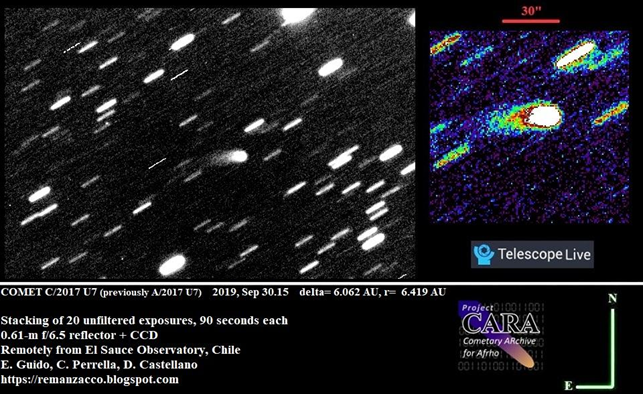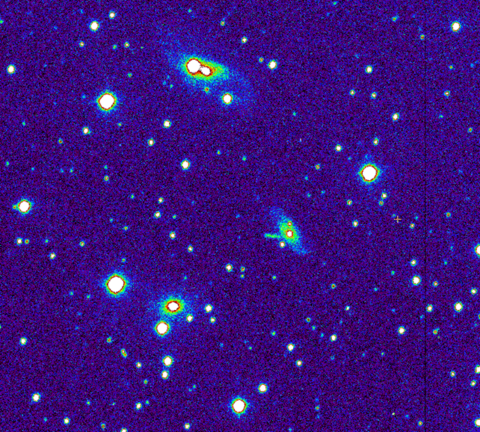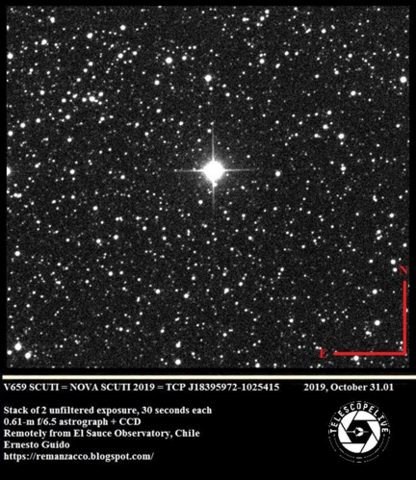Comet Researcher Ernesto Guido using Telescope Live

My name is Ernesto Guido, and I’m an Italian amateur astronomer. My main interests lie in the astrometry and physical properties of comets and asteroids. Since 2008 I regularly publish the most important results of my astronomical research in a blog that deals mainly (but not only) with comets & asteroids. I also actively collaborate with the CARA (Cometary ARchive for Afrho) group, which studies comets and in particular their dust production by determining their Afrho parameter.
I heard about the Telescope Live (TL) project for the first time through a presentation made a few months ago at a conference of the Unione Astrofili Italiani (UAI). Having started using remote telescopes since 2004 I thought to respond to the call and propose myself as a beta tester of the platform. What struck me most about the Telescope Live platform is its ease of use and flexibility, the system can easily adapt to the demands of the observer, which can obviously be the most disparate depending on the specific astronomical interest of the user (from scientific research to pure astrophotography). One of the most important aspects when talking about remote telescopes is their location. Telescope Live has several telescopes under some of the darkest skies and in various locations around the world. Moreover, the team that manages the platform has always been open to dialogue and to the exchange of ideas and so it has been possible to make some changes together that have made the system even more flexible.
During a period of a couple of months using the platform, I managed to get data on several comets. At this link you can find a selection of some of the comets I have been able to image recently using the Planewave Telescope CDK24 (CHI – 1) a 0.61-m f/6.5 reflector + CCD located at the El Sauce Observatory in Chile.

One of these observations (cometary activity reported from an object previously classified as asteroidal and now designated as COMET: C/2018 DO_4) has been published on CBET 4675 by the Central Bureau for Astronomical Telegrams and it is the first published scientific report using the 60 cm at El Sauce Observatory in Chile during the Beta Test phase.
In addition, I have been able to obtain a large number of measurements of numbered asteroids that will allow me to get an official code from the Minor Planet Center that will be useful to all users of the TL platform who want to send their measurements to the MPC (follow-up of comets, NEOcp object, etc.).

(CH1 Telescope on November 28, 2019)
My plans for the future are to continue the study and monitoring of the most important comets of the period, the follow-up of NEOCP objects newly discovered by professional surveys, the characterization of the light curve of the most interesting asteroids, etc. Obviously, thanks to the speed with which it is possible to point these telescopes remotely and their location in different parts of the world, it will be interesting also to try to follow all those transient phenomena that will require a fast confirmation and follow-up (see the recent Nova Scuti 2019 https://remanzacco.blogspot.com/2019/10/v659-scuti-nova-scuti-2019.html ).

Not bad for just the first two months of observations!
Ernesto Guido
Italy
